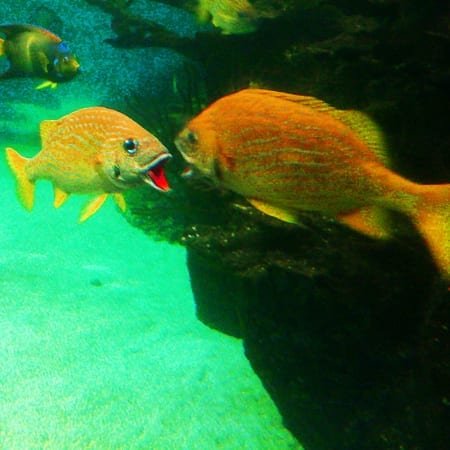By Daniel de la Calle
This month the Census of Marine Life (COML) project announced the results of their mammoth work since the year 2000, one of the biggest collaborations in the history of science with 2,700 researchers from 80 countries embarked in a total of 540 logged ocean expeditions. The total cost of the enterprise has been estimated at $650 million involving hundreds of institutions, laboratories and governments that have pitched in to produce some 30 million marine observations (all soon to be available to researchers and the public online) and and outstanding 2,600 scientific papers. Over this past decade the census takers have charted 1,200 new species and still need to formally identify another 5,000 more to bring the total of known species to 250,000. It is estimated that at least another 750,000 are waiting to be discovered, without counting the millions of different microbes that we know make for 90% of the ocean’s biomass. To give you an idea of what lies ahead, scientists estimate that 10% of species around European waters (75% in the Mediterranean deep-sea), 38% in South Africa, 39 to 58% in Antarctica, 70% around Japan or 80% in Australia need to yet be described. Dr. Snelgrove of Memorial University has compared the census to exploring a house with a flashlight. While it is a start, “we haven’t turned on the lights yet,” he said.
The main objective of the census though was to delineate a baseline for future measurement of diversity, distribution and abundance. This will assist in knowing where sea creatures live, how they are interconnected and which are thriving or dying under current conditions.
At the top of the food chain the research has shown the population of many large predators, such as tuna, sharks, some reef fish, deep sea fish and turtles declined by an average of 90% from historical records, in many cases due to overfishing. It is also worth mentioning that seal and whale numbers rebounded thanks to recent efforts to protect them.
The most common additions have been crustaceans and mollusks. Some of them include a hairy new species dubbed the “yeti crab”, a lobster weighing almost 9 pounds, an ancient shrimp thought to have been extinct for 50 million years and a 21-foot-long squid.
The Census of Marine Life can be included in a broader plan to create digital libraries of biological data about life on the planet. Marine data will feed into the Encyclopedia of Life project trying to document the existing 1,8 million named species. 90,000 of the censed species have now web pages in the Encyclopedia of Life. 35,000 of them even have DNA sequences. As Jesse Ausubel, environmental scientist at the Alfred P. Sloan Foundation and co-founder of the COML project puts it, this “is not your grandfather’s census: this census is this wonderful, living, interactive set of databases on the internet with hyperlinks to images, sounds, the ability to create maps.”
There also exists an International Barcode of Life project assembling the DNA sequences for all multi-cellular organisms. This libraries will let scientists carry out planet-wide studies on biodiversity.
In our own efforts to take a census my daughter and I recently took the train down to the Coney Island Aquarium armed with a cellphone camera and a notepad.




